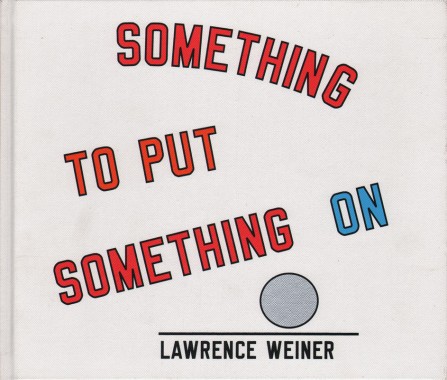
Lawrence Weiner, Something To Put Something On
Hardcover, 44 pp., offset 4/4, 255 x 215 mm
Edition of 5000
ISBN 9783865214911
Published by Steidl
$35.00 ·
Something to Put Something On poses direct questions about art-making to and for young readers. Generously endowed with its maker’s legendary wit, it is also, appropriately, the first title in the Little Steidl program. Neither storybook nor autobiography,
Something to Put Something On is rather a “questioning book” for children, at once moving and intriguing in its candor:
I WAS A CHILD & AS MOST CHILDREN I DID MAKE THINGS
I TRIED TO FIND A PLACE TO PUT THE THINGS I HAD MADE
AGAIN & AGAIN I FOUND THAT THE SUPPORT OR PLINTH OR TABLE
ALL RESTED UPON THE EARTH & I REALIZED THAT ALL PEOPLE OF ALL AGES
WHO HAD MADE SOMETHING HAD TO FIND A PLACE TO PUT
WHAT THEY HAD MADE
THOSE PEOPLE WHO ASK THE QUESTION & THOSE PEOPLE WHO TRY
TO ANSWER THE QUESTION ARE FUNCTIONING AS ARTISTS.
I WAS A CHILD & DECIDED TO BE AN ARTIST.
—Lawrence Weiner
Art, DAP, Education, Jerry Sohn, Lawrence Weiner, Margaret Seaworthy Gothic, Nina Holland, Simon Johnson, Steidl
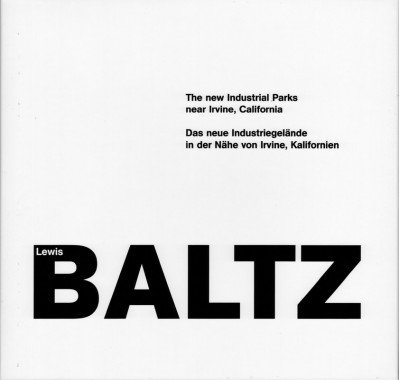
Lewis Baltz, The New Industrial Parks Near Irvine, California
Hardcover/slipcase, 112 pp., offset 1/duotone, 285 x 275 mm
English and German
Edition of 2000
ISBN 0-9630785-6-9
Published by RAM, Steidl
$55.00 ·
Lewis Baltz, with his iconic, minimalist photos of suburban landscape, is considered the founder of the New Topographics movement. Reproduced for the first time, his earliest portfolio, The Tract Houses (1971), and his preliminary forays into a minimal aesthetic, The Prototype Works (1967-1976), illuminate Baltz’s drive to capture the reality of a sprawling Western ecology gone wild. Together with The New Industrial Parks near Irvine, California, this trilogy reveals the indelible importance of Baltz in the development of contemporary photography. “Baltz turned his camera on the virtually featureless built environment of California … He pushed his compositions to an astringent minimum,” writes curator Sheryl Conkelton in an informative essay.
Art, Lewis Baltz, Photography, RAM, Sheryl Conkelton, Steidl, Whitney Museum
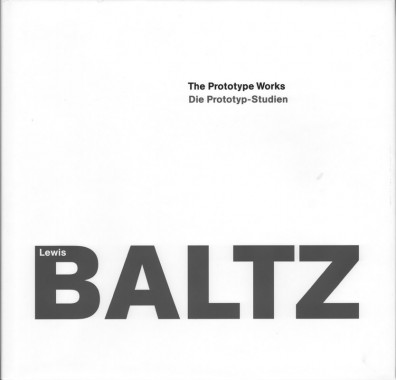
Lewis Baltz, The Prototype Works
Hardcover, 112 pp., offset 1/tritone, 285 x 275 mm
English and German
Edition of 2000
ISBN 0-9703860-5-2
Published by RAM, Steidl
$70.00 ·
Lewis Baltz, with his iconic, minimalist photos of suburban landscape, is considered the founder of the New Topographics movement. Reproduced for the first time, his earliest portfolio, The Tract Houses (1971), and his preliminary forays into a minimal aesthetic, The Prototype Works (1967-1976), illuminate Baltz’s drive to capture the reality of a sprawling Western ecology gone wild. Together with The New Industrial Parks near Irvine, California, this trilogy reveals the indelible importance of Baltz in the development of contemporary photography. “Baltz turned his camera on the virtually featureless built environment of California … He pushed his compositions to an astringent minimum,” writes curator Sheryl Conkelton in an informative essay.
Art, Lewis Baltz, Photography, RAM, Sheryl Conkelton, Steidl, Whitney Museum
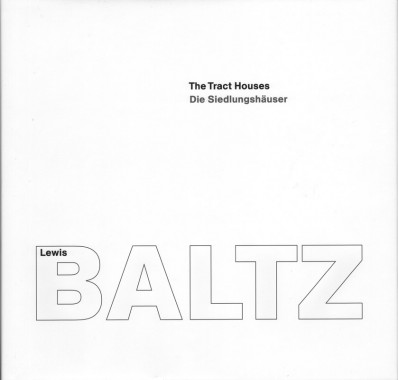
Lewis Baltz, The Tract Houses
Hardcover, 68 pp., offset 1/tritone, 285 x 275 mm
English and German
Edition of 2000
ISBN 0-9703860-4-4
Published by RAM, Steidl
$65.00 ·
Lewis Baltz, with his iconic, minimalist photos of suburban landscape, is considered the founder of the New Topographics movement. Reproduced for the first time, his earliest portfolio, The Tract Houses (1971), and his preliminary forays into a minimal aesthetic, The Prototype Works (1967-1976), illuminate Baltz’s drive to capture the reality of a sprawling Western ecology gone wild. Together with The New Industrial Parks near Irvine, California, this trilogy reveals the indelible importance of Baltz in the development of contemporary photography. “Baltz turned his camera on the virtually featureless built environment of California … He pushed his compositions to an astringent minimum,” writes curator Sheryl Conkelton in an informative essay.
Art, Lewis Baltz, Photography, RAM, Sheryl Conkelton, Steidl, Whitney Museum
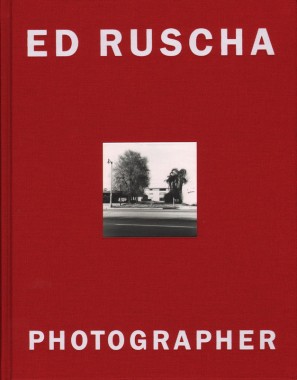
Ed Ruscha, Ed Ruscha Photographer
Hardcover, 184 pp., offset 4/1, 225 x 260 mm
Edition of 2000
ISBN 9783865212061
Published by Steidl
$35.00 · out of stock
Ed Ruscha’s relationship to photography is complex and ambivalent. The world-class painter — and author of a 1972 New York Times article called “‘I’m Not Really a Photographer’” — has been known to refer to his work in this second medium as a “hobby,” despite considerable, persistent critical interest. Whether he likes it or not, the small albums of plainly-shot, snapshot-sized images he produced in the 1960s and 70s, including Twenty-Six Gasoline Stations, intrigued his contemporaries and earned him an unshakable reputation. How? His subject matter was neither purely documentary nor solely artistic, in fact it was stereotypical and banal, with motifs drawn from the car-dominated western landscape. That rebellious material, along with his serial presentation, made for a mythical road-movie or photo-novel effect with Beat Generation overtones. The combination attracted artists and critics both, especially while serial logic was prominent in Pop art and Minimalism, and then retained that interest later as serial work became prominent in Conceptual art. Critics have remained attentive for decades, and Ruscha’s influence remains apparent in new work in Europe and North America. Ed Ruscha, Photographer departs from earlier collections to explore how these images — and all of Ruscha’s work in disciplines including painting, drawing, printmaking and photography–are guided and shaped by a single vision.
Art, DAP, Ed Ruscha, Lynn Scrabis, Makiko Ushiba, Photography, Steidl, Thea Hetzner, Whitney Museum
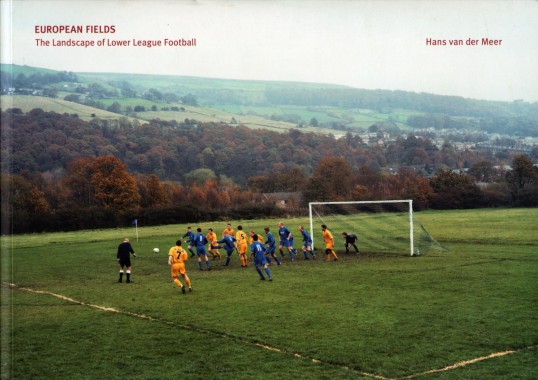
Hans van der Meer, European Fields
Hardcover, 176 pp., offset 4/4, 297 x 210 mm
Edition of 5000
ISBN 9783865212382
Published by Steidl
$30.00 · out of stock
At the beginning of the 1995 soccer season, Hans van der Meer set out to take photographs of the game that dodged the cliched traditions of modern sports photography. In an attempt to record the sport in its original form — a field, two goals and 22 players — he sought matches at the bottom end of the amateur leagues. He avoided tight telescopic details and the hyperbole of action photography, pulled back from the central subject of the pitch, and set the playing field and its unfolding action in the context of local elements. Over the last 10 years, Van der Meer has continued this project across the playing fields of Europe, traveling to every country with a significant history of the game. The Netherlands yielded 1998’s Dutch Fields, and the odyssey that brings forth European Fields has since taken him from Bihariain, Romania to Bjàrkà, Sweden, from Torp, Norway to Als*àrs, Hungary, from Bartkowo, Poland to Beire, Portugal, and to urban and suburban Greece, Finland, England, France, Germany, Scotland, Switzerland, Holland, Slovakia, Denmark, Ireland, Wales, Belgium, Spain and Italy. Van der Meer’s understated observations of the poetry and absurdity of human behavior on the field use soccer to consider–and provoke a laugh at–the human condition.
Art, DAP, Hans van der Meer, Michael Mack, Photography, Simon Kuper, Sport, Steidl
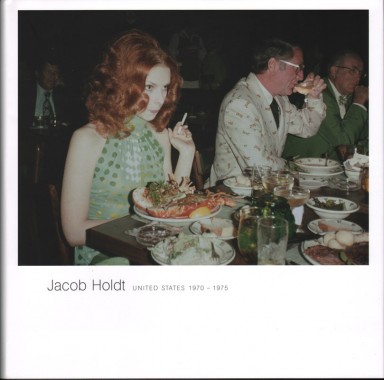
Jacob Holdt, United States 1970-1975
Hardcover, 192 pp., offset 4/4, 255 x 255 mm
Edition of 5000
ISBN 9783865213938
Published by Steidl
$40.00 ·
In the early 1970s, Jacob Holdt left his native Denmark and arrived in the U.S. with 40 dollars in his pocket. He meant to zip through the country on his way to South America, but he was so shocked and fascinated by what he saw here that he decided to stay a while. When his family was skeptical about the poverty he described in letters home, his father shipped over a cheap amateur camera, asking for proof, and Holdt began to create this portrait of America and its underclass. In the end, he spent five years as a vagabond, selling his blood twice a week and hitch-hiking over 100,000 miles. He befriended whoever offered him a ride, and a ride frequently became an offer to stay a few days. He never said no, and in the end visited more than 350 homes, where he photographed the people he lived with: poor families, millionaires, junkies, members of the Ku Klux Klan. His images echo the work of the WPA, and have inspired Lars Van Trier among others. More recently, Holdt, who was born 1947 in Copenhagen, has been working in third-world countries, documenting the lives of those in poverty there.
DAP, Folkwang Museum, Jacob Holdt, Photography, Steidl






